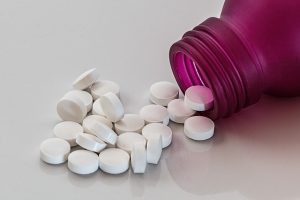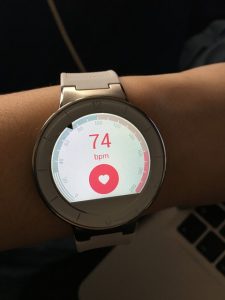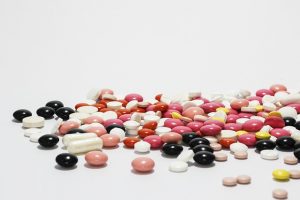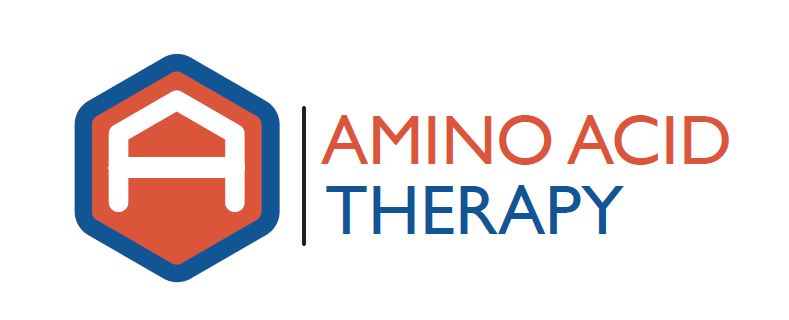by aatadmin | Mar 7, 2018 | Amino Acid Therapy, Parkinson's Disease, Symptoms of Neurotransmitter Imbalance
 Self-treatment with amino acids is incredibly common; we receive emails and/or calls every week from people that are ‘trying’ amino acid therapy on their own, but not getting the results that they want/need. In addition to these instances, I’m going to suggest that the definition of self-treatment be expanded to include anyone that actively or passively does not follow their health care professionals recommended supplement protocol – either by “experimenting” with doses other than those recommended or by using “similar” products to those recommended. This approach rarely works, and the reasons are pretty straightforward. (more…)
Self-treatment with amino acids is incredibly common; we receive emails and/or calls every week from people that are ‘trying’ amino acid therapy on their own, but not getting the results that they want/need. In addition to these instances, I’m going to suggest that the definition of self-treatment be expanded to include anyone that actively or passively does not follow their health care professionals recommended supplement protocol – either by “experimenting” with doses other than those recommended or by using “similar” products to those recommended. This approach rarely works, and the reasons are pretty straightforward. (more…)
by aatadmin | Feb 21, 2018 | Amino Acid Therapy, dopamine dominance, Parkinson's Disease, Symptoms of Neurotransmitter Imbalance
 The sensation that a person’s heart races, often described as “heart palpitations”, after taking a dose of amino acids occurs in roughly 10% of the people we see that are following a dopamine dominant protocol. (more…)
The sensation that a person’s heart races, often described as “heart palpitations”, after taking a dose of amino acids occurs in roughly 10% of the people we see that are following a dopamine dominant protocol. (more…)
by aatadmin | Feb 7, 2018 | Amino Acid Therapy, dopamine dominance, Parkinson's Disease
 I receive dozens of inquiries on a monthly basis about an amino acid protocol that people with Parkinson’s Disease (PD) can use to improve their mental and physical function. Some of these people are not (and have not) taken any conventional medications for PD, such as carbiodopa/levodopa; but many are taking some combination of conventional medications and are not receiving relief from their symptoms. The problem is, everyone’s needs are different, so there is no one protocol people can follow to achieve optimal function. However, here I will detail the general process that should be followed in order to find each person’s optimal amino acid dosing. (more…)
I receive dozens of inquiries on a monthly basis about an amino acid protocol that people with Parkinson’s Disease (PD) can use to improve their mental and physical function. Some of these people are not (and have not) taken any conventional medications for PD, such as carbiodopa/levodopa; but many are taking some combination of conventional medications and are not receiving relief from their symptoms. The problem is, everyone’s needs are different, so there is no one protocol people can follow to achieve optimal function. However, here I will detail the general process that should be followed in order to find each person’s optimal amino acid dosing. (more…)
by aatadmin | Jan 31, 2018 | Amino Acid Therapy, dopamine dominance, Parkinson's Disease, restless legs
 For those clients that are found to be dopamine dominant, including everyone that has restless leg syndrome (RLS) and Parkinson’s disease (PD), we often recommend that they avoid foods rich in the amino acid tyramine while taking L-dopa/mucuna pruriens and/or large amounts of L-tyrosine. This is because that in some people, this combination can cause an abrupt increase in blood pressure. (more…)
For those clients that are found to be dopamine dominant, including everyone that has restless leg syndrome (RLS) and Parkinson’s disease (PD), we often recommend that they avoid foods rich in the amino acid tyramine while taking L-dopa/mucuna pruriens and/or large amounts of L-tyrosine. This is because that in some people, this combination can cause an abrupt increase in blood pressure. (more…)
by aatadmin | Jan 17, 2018 | Amino Acid Therapy, Neurotransmitters, Parkinson's Disease, Symptoms of Neurotransmitter Imbalance
 Many people are on medications that alter, mimic or in some way manipulate neurotransmitter levels in the body. These include stimulants, such as amphetamines (i.e., methamphetamine, “speed”, Adderall, Vyvanse, Dexedrine), ecstasy (MDMA), cocaine, and methylphenidate (i.e., Ritalin, Concerta); norepinephrine-reuptake inhibitors (i.e., Strattera, Edronax); norepinephrine-dopamine reuptake inhibitors (i.e., Wellbutrin, Zyman); selective serotonin reuptake inhibitors (i.e., Paxil, Prozac, Zoloft, Celexa, Lexapro and Luvox); triptans (i.e., Imitrex, Maxalt, Amerge, Zomig); sleep aids (i.e., Ambien, Lunesta); barbiturates (i.e., phenobarbital, Fioricet); benzodiazepines (i.e., Xanax, Klonopin, Valium, Lorazepam); MAO inhibitors (i.e., Azilect, selegiline, Nardil, Morplan); COMT inhibitors (i.e., Comtan, Tasmar); and carbidopa/levodopa (i.e., Sinamet, Rytary, Stalevo). While these medications may exacerbate or cause neurotransmitter imbalances in the body, most can be safely used along with amino acid therapy to achieve optimal neurotransmitter function. (more…)
Many people are on medications that alter, mimic or in some way manipulate neurotransmitter levels in the body. These include stimulants, such as amphetamines (i.e., methamphetamine, “speed”, Adderall, Vyvanse, Dexedrine), ecstasy (MDMA), cocaine, and methylphenidate (i.e., Ritalin, Concerta); norepinephrine-reuptake inhibitors (i.e., Strattera, Edronax); norepinephrine-dopamine reuptake inhibitors (i.e., Wellbutrin, Zyman); selective serotonin reuptake inhibitors (i.e., Paxil, Prozac, Zoloft, Celexa, Lexapro and Luvox); triptans (i.e., Imitrex, Maxalt, Amerge, Zomig); sleep aids (i.e., Ambien, Lunesta); barbiturates (i.e., phenobarbital, Fioricet); benzodiazepines (i.e., Xanax, Klonopin, Valium, Lorazepam); MAO inhibitors (i.e., Azilect, selegiline, Nardil, Morplan); COMT inhibitors (i.e., Comtan, Tasmar); and carbidopa/levodopa (i.e., Sinamet, Rytary, Stalevo). While these medications may exacerbate or cause neurotransmitter imbalances in the body, most can be safely used along with amino acid therapy to achieve optimal neurotransmitter function. (more…)
 Self-treatment with amino acids is incredibly common; we receive emails and/or calls every week from people that are ‘trying’ amino acid therapy on their own, but not getting the results that they want/need. In addition to these instances, I’m going to suggest that the definition of self-treatment be expanded to include anyone that actively or passively does not follow their health care professionals recommended supplement protocol – either by “experimenting” with doses other than those recommended or by using “similar” products to those recommended. This approach rarely works, and the reasons are pretty straightforward. (more…)
Self-treatment with amino acids is incredibly common; we receive emails and/or calls every week from people that are ‘trying’ amino acid therapy on their own, but not getting the results that they want/need. In addition to these instances, I’m going to suggest that the definition of self-treatment be expanded to include anyone that actively or passively does not follow their health care professionals recommended supplement protocol – either by “experimenting” with doses other than those recommended or by using “similar” products to those recommended. This approach rarely works, and the reasons are pretty straightforward. (more…)
 The sensation that a person’s heart races, often described as “heart palpitations”, after taking a dose of amino acids occurs in roughly 10% of the people we see that are following a
The sensation that a person’s heart races, often described as “heart palpitations”, after taking a dose of amino acids occurs in roughly 10% of the people we see that are following a  I receive dozens of inquiries on a monthly basis about an amino acid protocol that people with Parkinson’s Disease (PD) can use to improve their mental and physical function. Some of these people are not (and have not) taken any conventional medications for PD, such as carbiodopa/levodopa; but many are taking some combination of conventional medications and are not receiving relief from their symptoms. The problem is, everyone’s needs are different, so there is no one protocol people can follow to achieve optimal function. However, here I will detail the general process that should be followed in order to find each person’s optimal amino acid dosing.
I receive dozens of inquiries on a monthly basis about an amino acid protocol that people with Parkinson’s Disease (PD) can use to improve their mental and physical function. Some of these people are not (and have not) taken any conventional medications for PD, such as carbiodopa/levodopa; but many are taking some combination of conventional medications and are not receiving relief from their symptoms. The problem is, everyone’s needs are different, so there is no one protocol people can follow to achieve optimal function. However, here I will detail the general process that should be followed in order to find each person’s optimal amino acid dosing.  For those clients that are found to be
For those clients that are found to be  Many people are on medications that alter, mimic or in some way manipulate neurotransmitter levels in the body. These include stimulants, such as amphetamines (i.e., methamphetamine, “speed”, Adderall, Vyvanse, Dexedrine), ecstasy (MDMA), cocaine, and methylphenidate (i.e., Ritalin, Concerta); norepinephrine-reuptake inhibitors (i.e., Strattera, Edronax); norepinephrine-dopamine reuptake inhibitors (i.e., Wellbutrin, Zyman); selective serotonin reuptake inhibitors (i.e., Paxil, Prozac, Zoloft, Celexa, Lexapro and Luvox); triptans (i.e., Imitrex, Maxalt, Amerge, Zomig); sleep aids (i.e., Ambien, Lunesta); barbiturates (i.e., phenobarbital, Fioricet); benzodiazepines (i.e., Xanax, Klonopin, Valium, Lorazepam); MAO inhibitors (i.e., Azilect, selegiline, Nardil, Morplan); COMT inhibitors (i.e., Comtan, Tasmar); and carbidopa/levodopa (i.e., Sinamet, Rytary, Stalevo). While
Many people are on medications that alter, mimic or in some way manipulate neurotransmitter levels in the body. These include stimulants, such as amphetamines (i.e., methamphetamine, “speed”, Adderall, Vyvanse, Dexedrine), ecstasy (MDMA), cocaine, and methylphenidate (i.e., Ritalin, Concerta); norepinephrine-reuptake inhibitors (i.e., Strattera, Edronax); norepinephrine-dopamine reuptake inhibitors (i.e., Wellbutrin, Zyman); selective serotonin reuptake inhibitors (i.e., Paxil, Prozac, Zoloft, Celexa, Lexapro and Luvox); triptans (i.e., Imitrex, Maxalt, Amerge, Zomig); sleep aids (i.e., Ambien, Lunesta); barbiturates (i.e., phenobarbital, Fioricet); benzodiazepines (i.e., Xanax, Klonopin, Valium, Lorazepam); MAO inhibitors (i.e., Azilect, selegiline, Nardil, Morplan); COMT inhibitors (i.e., Comtan, Tasmar); and carbidopa/levodopa (i.e., Sinamet, Rytary, Stalevo). While 